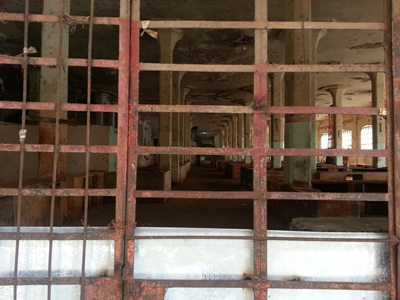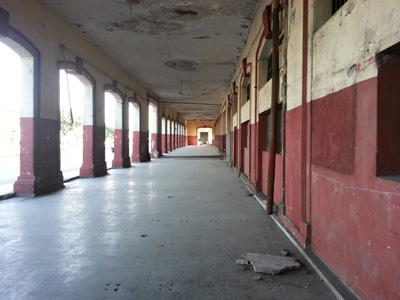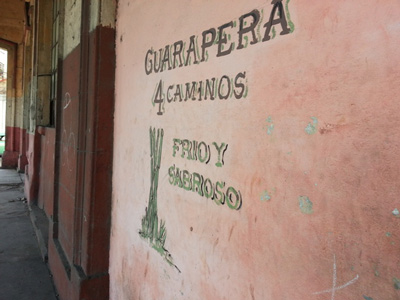Historic Havana Market Closes
The over 100-year-old Cuatro Caminos Market, fate uncertain
Graham Sowa

HAVANA TIMES — During the final week of January the locally famous Cuatro Caminos market in Havana, Cuba closed its doors to the public after more than 100 years of business under both capitalist and communist economic models.
Even though I live a few blocks from the market, located at the lowest point on the Calzada de Cerro/Monte road between Capitolio and the Cerro Municipality, I didn’t hear the rumors of its closing until early February.
The first details emerged while I was eavesdropping on the public bus. Everyone chatting agreed that the market is closed and that the two story building, which covers an entire city block, is slated for restoration. The agreement ended there.
An older man said that an Italian investor was paying for the restoration. Others said the Chinese will foot the bill. Some say it will take two years, others say four. Most passengers didn’t look like they cared at all, much less commenting on the matter.
I, however, happened to be one of the few with interest. I considered it newsworthy, and something substantive I could write about for Havana Times. Also, I did my shopping at Cuatro Caminos.
So to get some more information I decided to walk a few blocks downhill and poke around a bit.
The first thing I noticed as I neared the market was the absence of informal vendors on the sidewalk and in stairwells. Usually I would get half of my shopping done before I even got to the market by buying from people selling stuff illegally.

The building was closed, as I expected. I was left somewhat surprised that along with the vegetable and meat market all other stores and shops along the periphery were also shuttered.
Even the bank to change money had shut its doors with a sign posted saying the last day of business would be the 27th of January.
It was at this moment that I saw the economic impact on workers has to have been more than just a few vegetable and meat vendors being relocated to other city markets.
The informal vendors were all gone, which means no more sketchy cheese at moderately good prices or repackaged chocolate cookies or plastic bags for sale.
Also missing was the aroma of pork sandwiches and fried corn meal to help cut the stench of thick diesel fumes from the street.
The old people reselling the newspaper to make a few pesos a day were not crowding the steps or hobbling across the street. The ladies on the corner that sold flowers, perhaps the only naturally occurring pastel colors in this part of the city, were all gone.
There was plenty of urine and excrement in every corner, nook and cranny; clearly visible by following the stains from the sidewalk toward the building…I guess some things will never change.
For all the talk on the bus I didn’t see any Chinese workers nor did I hear any Italian being spoken amongst the few people milling about.

There was no machinery or signs of restoration overtly visible from the busted out windows made secure by impromptu rebar barriers.
I did see some men in welding masks, but quickly concluded they were there to put up more rebar and also take out useful pieces of the building such as electrical and plumbing fixtures.
The massive structure is now a bare concrete and steel shell.
A police officer on the corner told me pretty much what I heard on the bus: market closed, maybe for two years, yeah, the Chinese might have something to do with it all.
The officer then pointed me to a store that sells milk, meat and dry goods in hard currency across the street.
Some severely bored looking security guards on the back side of the building told me the same thing: the market is going to be restored. Where did all the workers go to? They were sent to other farmers markets.
No one really seemed to know more than I had already heard. If they did know something else they were not spilling the beans to a super touristy looking fellow like me.
Adding to the fact was that I didn’t really feel like striking up a lengthy “get to know ya” conversation and opening a bottle of rum with the security guards just to fish for more gossip.
Turning to other sources I found that the internet was not much more revealing.
The only article I found after a half hearted Google search was from Cubanet, published on February 17, claiming that the Cuatro Caminos market will be turned into a museum by none other than city historian Eusebio Leal.
Like many projects in Cuba, we probably won’t know details until the work is done; which is to say, not any time soon.
Click on the thumbnails below to view all the photos in this gallery. On your PC or laptop, you can use the directional arrows on the keyboard to move within the gallery. On cell phones use the keys on the screen.













moses, i completely agree with your observation. timidity is the perfect word.
I do not know Graham but in his defense it is necessary that everyone buy goods from unlicensed vendors. One cannot survive in Cuba otherwise. Casually breaking those laws is the norm. Also, I cannot remember Graham defending and praising the dictatorship. I remember his postings to be non-political.
Once again, Graham admits to breaking Cuban laws by buying goods from unlicensed vendors. Interesting how he defends and praises the dictatorship while casually breaking their laws whenever it suits him.
I am always amazed how Cubans in Cuba respond with such timidity to these kinds of events. Yet, last year when my wife and I were in Miami visiting her cousin, we went to a Macy’s department store and there was a Cuban woman at the register going ballistic because of a discrepancy between the price of a coffee maker and the advertised price in the newspaper. She had no problem demanding her rights then!